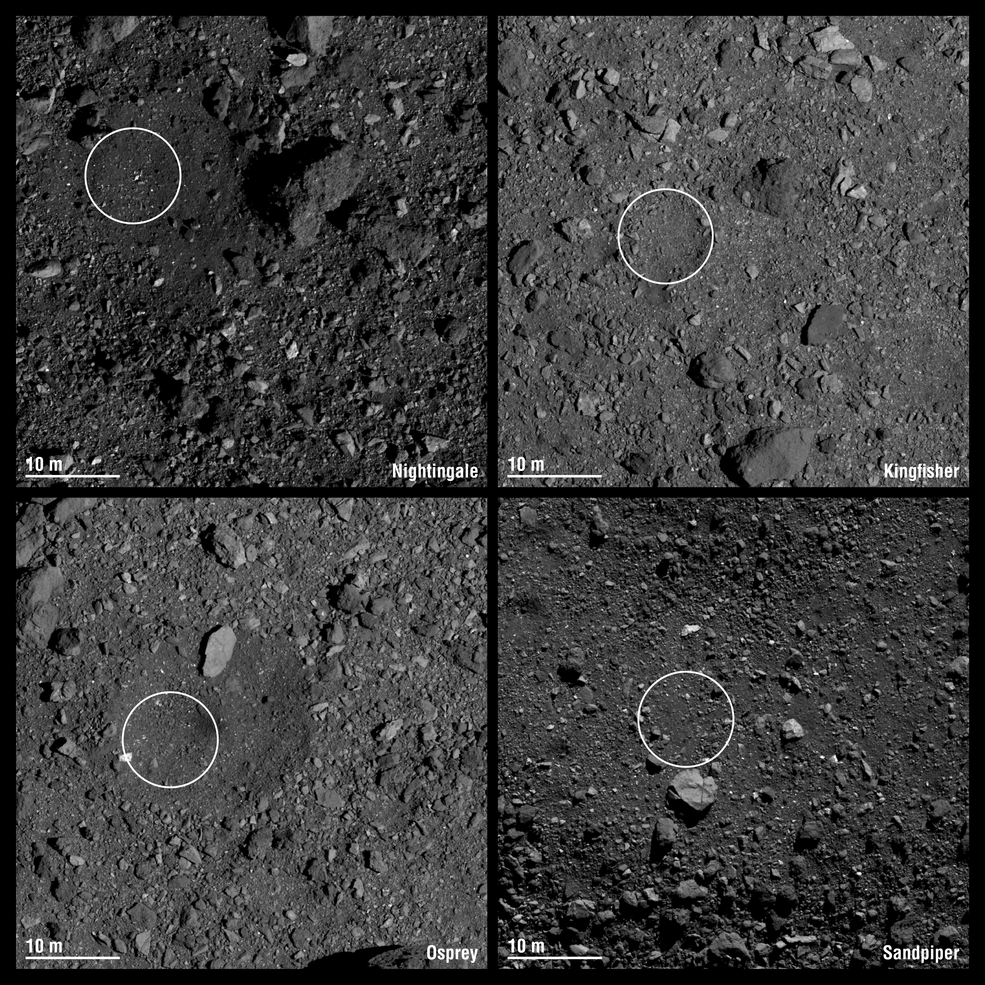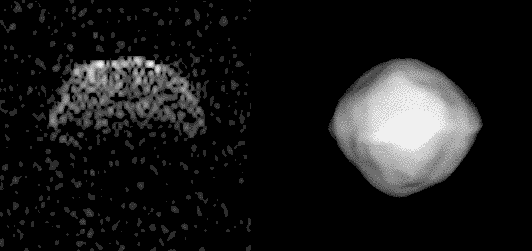This week, we have been recapping noteworthy OSIRIS-REx mission events each day so you can catch up on anything you may have missed so far on NASA’s first mission to collect a sample from an asteroid.
(Post #4 in a series of four)
At 1:50 p.m. EDT on Oct. 20, 2020, NASA’s OSIRIS-REx spacecraft fired its thrusters to nudge itself out of orbit around Bennu. It extended the shoulder, then elbow, then wrist of its 11-foot (3.35-meter) sampling arm and transited across Bennu while descending about half a mile (805 meters) toward the surface. After about a four-hour autonomous descent to a 26-foot- (8-meter-) wide spot on Bennu, past menacing boulders that could tip the spacecraft or the sample head and thwart the sample grab, OSIRIS-REx contacted the surface. It then fired a burst of nitrogen gas that stirred up dust and rocks, which were captured by the sample-collection head. Finally, OSIRIS-REx fired its thrusters and safely backed away from Bennu, allowing a captivated global audience to breathe a collective sigh of relief.
Before departing Bennu, OSIRIS-REx conducted one last flyby of the sample site, “Nightingale,” so scientists could see how the spacecraft’s contact with Bennu’s surface altered the site. They saw something astonishing: Even though the spacecraft barely touched the surface, it left a sizeable crater and scattered many rocks. Scientists ran hundreds of computer simulations to understand how this could have happened, given they had expected the spacecraft to leave only a small divot in the surface.
That’s when they learned that the particles making up Bennu’s exterior are loosely packed and lightly bound to each other, which means they act more like a fluid than a solid. Had it not fired its thrusters to back away immediately after grabbing a sample, OSIRIS-REx would have sunk into Bennu.
On May 10, 2021, the spacecraft departed Bennu and headed back toward Earth to drop off the sample-return capsule. When it arrives here on Sept. 24, 2023, OSIRIS-REx will release its sample capsule to land on Earth in the Utah desert, but the spacecraft will not land itself. With the sample delivered, the spacecraft will set off on a new mission, OSIRIS-APEX (OSIRIS-Apophis Explorer), to explore asteroid Apophis.
Learn more:
NASA’s OSIRIS-REx Spacecraft Collects Significant Amount of Asteroid
NASA’s OSIRIS-REx Spacecraft Heads for Earth with Asteroid Sample
Surprise – Again! Asteroid Bennu Reveals its Surface is Like a Plastic Ball Pit
— Lonnie Shekhtman







